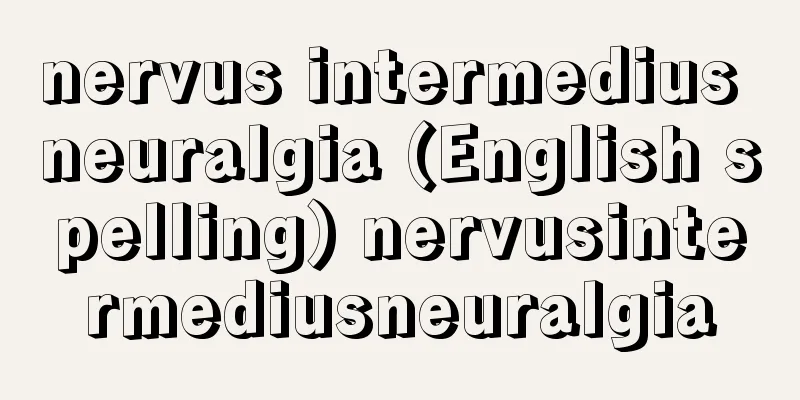Ischemic heart disease

|
Ischemic heart disease is a broad disease concept that includes myocardial infarction, stable angina, and unstable angina. Each disease has a genetic background, but in terms of the genome, it can be divided into two concepts: DNA mutations and DNA polymorphisms. Single-gene diseases with Mendelian inheritance are caused by DNA mutations in the germline, which are determining factors for disease susceptibility. DNA polymorphisms are also found in non-patient populations, so they are not decisive for disease onset but are risk factors. DNA polymorphisms are thought to be involved in the onset of disease through complex interactions with other DNA polymorphisms and environmental factors. (1) Genetic predisposition as a risk factor for multifactorial diseases Recent advances in genomic research have made it possible to perform genome-wide association studies comparing a large number of patient groups with a large number of control groups, and numerous genes related to ischemic heart disease have been identified. Some of these are shown in Table 5-4-1 (dbGaP database). Although not included in the table, association studies are also progressing in Japan, and multiple inflammation-related genes have been identified. The odds ratio of the related genes identified so far is a maximum of about 1.8, which is not necessarily a large risk factor compared to known coronary risk factors, but the odds ratio increases when multiple related genes are combined. As will be described later, as the evidence strengthens, they can be used as disease risk markers. In Kawasaki disease, which is complicated by giant coronary aneurysms and coronary artery calcification, two genes in the Ca 2 + /NFAT pathway are associated with the presence or absence of coronary artery disease complications. However, it should be noted that findings from association studies are evidence level 3 in evidence-based medicine (EBM). The evidence level needs to be raised through meta-analysis or prospective studies. (2) Genes responsible for ischemic heart disease with Mendelian inheritance pattern 1) MEF2A gene: A 21-base deletion in exon 11 of this gene was found in a family with autosomal dominant inheritance of familial coronary artery disease. Mutations involving amino acid substitutions at three other sites have also been reported. This gene encodes a transcription factor, and the above mutations are located in or near the main transcription activation region. Gene mutations result in a loss of transcription activation ability, but the functional relationship to coronary artery disease is unclear. 2) LRP6 gene: This gene is a member of the LDL receptor gene family and is highly expressed in smooth muscle cells. It is involved in the Wnt signaling pathway and controls the proliferation of vascular smooth muscle cells by being involved in cell cycle activity. The R611C mutation in this gene causes early-onset coronary artery disease. From a cell biological perspective, this mutation promotes the proliferation of vascular smooth muscle cells stimulated by PDGF, leading to atherosclerosis. (3) Genes responsible for hereditary lipid metabolism disorders associated with coronary artery disease 1) LDL receptor gene: It is one of the genes that cause familial hypercholesterolemia. The LDL receptor recognizes apoprotein B-100 or apoprotein E and transports lipoproteins from the circulating blood to the liver. Gene mutations cause the loss of this function, resulting in high serum cholesterol levels. More than 60 gene mutations have been reported, and homozygotes for these mutations are prone to coronary artery disease from infancy to childhood. Heterozygotes are prone to coronary artery disease in their 20s in men and in their 40s in women. 2) PCSK9 gene: This gene belongs to the endoprotease family and encodes a protein involved in the degradation of LDL receptors. Mutations in this gene promote the degradation of LDL receptors, increasing the amount of LDL in the blood, and are the cause of familial hypercholesterolemia. On the other hand, there is also a polymorphism in the same gene that, although not a determining factor, lowers the amount of LDL in the blood. This polymorphism has a protective effect against coronary artery disease. 3) LDLRAP1 gene: This gene is the causative gene for familial hypercholesterolemia, which is inherited in an autosomal recessive manner. This gene encodes an adaptor protein that binds to the cytoplasmic portion of the LDL receptor, phospholipids, or clathrin components involved in endocytosis, and is involved in the internalization of the LDL receptor into cells. Nine types of DNA mutations have been identified, but most are nonsense or frameshift mutations, which prevent the synthesis of the original protein and result in loss of function. 4) ABCA1 gene: This gene is the causative agent of Tangier disease, an autosomal recessive genetic disorder characterized by low serum HDL cholesterol levels, and familial HDL deficiency. The protein encoded by this gene is a transporter with an ATP-binding cassette, and plays an important role in the formation of HDL. More than 20 types of DNA mutations have been reported for both diseases, all of which are loss-of-function. 5) ABCG5/ABCG8 genes: This gene is the causative gene for sitosterolemia, which is inherited in an autosomal recessive manner. Both genes are present in opposite orientations at the same locus, and are co-expressed in hepatocytes and small intestinal epithelial cells, with the same expression regulated by a bidirectional promoter between the genes. In the liver, they have the function of excreting cholesterol into bile, and in the small intestine, they have the function of excreting plant sterols and cholesterol into the small intestinal lumen. More than 15 types of genetic mutations have been reported for both genes. 6) APOA1 gene: This is the causative gene for apolipoprotein AI deficiency. Apolipoprotein AI is a major component of HDL, and loss of function due to genetic mutations results in significant hypo-HDLemia. More than 20 types of genetic mutations have been reported. 7) APOB gene: This gene is responsible for familial apoB-100 deficiency, which is inherited in an autosomal dominant manner. A genetic mutation occurs in the LDL receptor binding domain of apoprotein B, resulting in reduced binding ability to the LDL receptor. 8) APOE gene: The E2 isoform of the APOE gene lacks receptor binding ability, and homozygosity for the E2 isoform is the basis of familial type III hyperlipidemia. 9) LIPC gene: This gene is the causative agent of a very rare form of hepatic lipase deficiency. Three types of gene mutations have been reported. (4) Other conditions such as cholesteryl ester transfer protein deficiency are caused by abnormalities in the CETP gene and result in marked hyper-HDL cholesterolemia, but no conclusion has been reached regarding its relationship to cardiovascular disease. Familial combined hyperlipidemia and familial type IV hyperlipidemia are prone to complications of coronary artery disease, but the causative genes are unknown. The genetic mutations that are determinants of childhood diseases such as Kawasaki disease and generalized arterial calcification of infancy, which are associated with coronary artery disease, have also not been identified. [Tanaka Toshihiro] ■ References <br /> This field is progressing very rapidly and a large amount of knowledge has been accumulated, so it is essential to refer to online databases: dbGaP database (http://www.ncbi.nlm.nih.gov/gap)Online Mendelian Inheritance in Man (http://omim.org) Genes related to ischemic heart disease registered in the public database (dbGaP database) "> Table 5-4-1 Source : Internal Medicine, 10th Edition About Internal Medicine, 10th Edition Information |
|
虚血性心疾患は心筋梗塞,安定狭心症,不安定狭心症などを含む広い疾患概念である.それぞれの疾患について遺伝学的背景が存在するが,ゲノム上においてはDNA変異とDNA多型の2種類の概念に分けられる.Mendel型遺伝形式をとる単一遺伝子病の原因となるのが生殖細胞系列におけるDNA変異であり,疾患罹患性の決定因子となる.DNA多型は非患者集団においても認められるため,疾患罹患に対して決定的なものではなく危険因子である.DNA多型は,ほかのDNA多型や環境要因との複合的な相互作用により疾患の発症にかかわると考えられている. (1)多因子疾患の危険因子としての遺伝的素因 近年のゲノム研究の進歩により,多数の患者群と多数の対照群を比較するゲノムワイド関連解析が可能となり,数多くの虚血性心疾患関連遺伝子が同定されている.その一部を表5-4-1に示す(dbGaP database).表には含まれていないが,日本においても関連解析は進んでおり,炎症関連遺伝子が複数同定されている. これまでに明らかになった関連遺伝子のオッズ比は最大でも1.8程度で,既知の冠危険因子と比較すると必ずしも大きな危険因子ではないが,複数の関連遺伝子を組み合わせることによりオッズ比は高まる.後述するが,エビデンスの強化により罹患危険性マーカーとして利用可能となる. 巨大冠動脈瘤や冠動脈石灰化を合併する川崎病については,Ca2+/NFAT経路上にある2つの遺伝子が冠動脈病変合併症の有無に関連している. ただし,関連解析によって得られる知見はEBM(evidence-based medicine)におけるエビデンスレベル3であることに留意すべきである.メタ解析あるいは前向き研究により,エビデンスレベルをあげる必要がある. (2)Mendel型遺伝形式をとる虚血性心疾患の原因遺伝子 1)MEF2A遺伝子: 常染色体優性遺伝形式をとる家族性冠動脈疾患の家系において,この遺伝子のエクソン11に21塩基の欠損が認められた.その他3カ所のアミノ酸置換を伴う変異も報告されている.この遺伝子は転写因子をコードしており,上記の変異は主要転写活性化領域あるいはその近傍にあたる.遺伝子変異により転写活性化能が失われるが,冠動脈疾患との機能的連関は明らかではない. 2)LRP6遺伝子: この遺伝子は,LDL受容体遺伝子ファミリーの一員であり,平滑筋細胞での発現量が多い.Wntシグナル経路に存在し,細胞周期活性にかかわることで,血管平滑筋細胞の増殖を制御している.この遺伝子のR611C変異が,若年発症型冠動脈疾患の原因となる.細胞生物学的にはこの変異により,PDGF刺激による血管平滑筋細胞の増殖が促進され,動脈硬化につながる. (3)冠動脈疾患を合併する遺伝性脂質代謝異常症の原因遺伝子 1)LDL受容体遺伝子: 家族性高コレステロール血症の原因遺伝子の1つである.LDL受容体はアポ蛋白B-100あるいはアポ蛋白Eを認識し,リポ蛋白を循環血液中から肝臓へ輸送する役割をもつ.遺伝子変異によりこの機能を失い,血清コレステロール値が高値となる.遺伝子変異は60カ所以上報告されており,変異のホモ接合体では幼児から小児期より冠動脈疾患の合併をみる.ヘテロ接合体においては男性では20代から,女性では40代から冠動脈疾患が認められる. 2)PCSK9遺伝子: この遺伝子はエンドプロテアーゼファミリーに属し,LDL受容体の分解にかかわる蛋白をコードしている.この遺伝子の変異はLDL受容体の分解を促進することで血中LDL量を増加させ,家族性高コレステロール血症の原因となっている.一方で,決定因子ではないが,同じ遺伝子内の変化でありながら,血中LDL量を低下させる多型も存在する.この多型は冠動脈疾患罹患に対して保護的に働く. 3)LDLRAP1遺伝子: 常染色体劣性遺伝形式をとる家族性高コレステロール血症の原因遺伝子である.この遺伝子がコードするのは,LDL受容体の細胞質部分,リン脂質あるいはエンドサイトーシスにかかわるクラスリンコンポーネントと結合するアダプター蛋白であり,LDL受容体の細胞内取り込みにかかわる.9種類のDNA変異が同定されているが,ほとんどがナンセンス変異あるいはフレームシフト変異であり,本来の蛋白がつくられず,機能を喪失する. 4)ABCA1遺伝子: 血清HDLコレステロールの低値を呈する常染色体劣性遺伝形式をとるTangier病や家族性HDL欠損症の原因遺伝子である.この遺伝子がコードする蛋白はATP結合カセットをもつトランスポーターであり,HDLの形成に重要な役割を果たす.両疾患合わせて20種類以上のDNA変異が報告されており,いずれも機能喪失型である. 5)ABCG5/ABCG8遺伝子: 常染色体劣性遺伝形式をとるシトステロール血症の原因遺伝子である.両遺伝子は同一遺伝子座に逆方向に存在しており,遺伝子間の双方向プロモーターにより,同一の発現制御を受け,肝細胞および小腸上皮細胞で共発現している.肝臓では胆汁へのコレステロール排出,小腸では植物ステロールとコレステロールを小腸腔内に排出する機能をもつ.両遺伝子合わせて15種類以上の遺伝子変異が報告されている. 6)APOA1遺伝子: アポリポ蛋白AI欠損症の原因遺伝子である.アポリポ蛋白AIはHDLの主要な構成成分であり,遺伝子変異による機能喪失により著明な低HDL血症を呈する.20種類以上の遺伝子変異が報告されている. 7)APOB遺伝子: 常染色体優性遺伝形式をとる家族性アポB-100欠損症の原因遺伝子である.アポ蛋白BのLDL受容体結合領域に遺伝子変異をきたし,LDL受容体への結合能が低下している. 8)APOE 遺伝子: APOE 遺伝子のE2アイソフォームは受容体への結合能を欠いており,家族性III型高脂血症においてはE2アイソフォームのホモ接合体が病態の基盤となっている. 9)LIPC遺伝子: 非常にまれな肝性リパーゼ欠損症の原因遺伝子である.3種類の遺伝子変異が報告されている. (4)その他 コレステリルエステル転送蛋白欠損症はCETP遺伝子の異常が原因で著明な高HDL血症を呈するが,心血管病合併との関係については結論をみていない. 家族性複合型高脂血症,家族性Ⅳ型高脂血症は冠動脈疾患の合併をきたしやすいが,原因遺伝子は不明である.小児期の疾患で冠動脈病変の合併を認める川崎病あるいはgeneralized arterial calcification of infancyについても決定因子となる遺伝子変異は明らかになっていない.[田中敏博] ■文献 この分野の進歩は非常に早く,かつ大量の知見が集積されているため,web上のデータベースを参照することが必須である.dbGaP database (http://www.ncbi.nlm.nih.gov/gap)Online Mendelian Inheritance in Man (http://omim.org) 公開データベース(dbGaP database)に登録されている虚血性心疾患の関連遺伝子"> 表5-4-1 出典 内科学 第10版内科学 第10版について 情報 |
>>: Ischemic necrosis of the bone
Recommend
Guo Jingzhi - Kaku Keishi
…A native of Zheng County, Huazhou (Shaanxi Provi...
Bakary, D.
...France took until 1921 to put down the fierce ...
Bucket washing song - Okearaiuta
...There were various kinds of songs according to...
Okabe Kinjiro - Okabe Kinjiro
Electrical engineer. Born in Nagoya. After gradua...
Vote - vote
〘 noun 〙 In a meeting, the chairman takes up the o...
Nagoya Sanzaburou - Nagoya Sanzaburou
Along with Okuni of Izumo, he is likened to the f...
Chemicals - KAGAKUYAKUHIN
A chemical used to bring about a chemical change. ...
Smoke bag - Kanentai
…Kiseru can be used as a smoke bag, so a smoking ...
Shelley, Percy Bysshe
Born: 4 August 1792, near Horsham, Sussex Died Jul...
Wotton, H. - Wotton
…Generally, it refers to a diplomatic mission (am...
Fake academic and party affiliation
…In 1194 (5th year of Shaoxi, Zhu Xi was 65 years...
Disc jockey
This refers to radio and television announcers and...
time division multiplexing
…This is the multiplex communication method that ...
Penicillin shock
Penicillin shock is a condition that occurs when p...
King Yuhara
Year of birth: Year of birth and death unknown. A ...







![Jeanne [mountain] - Jeanne](/upload/images/67cbd0b32c02e.webp)

